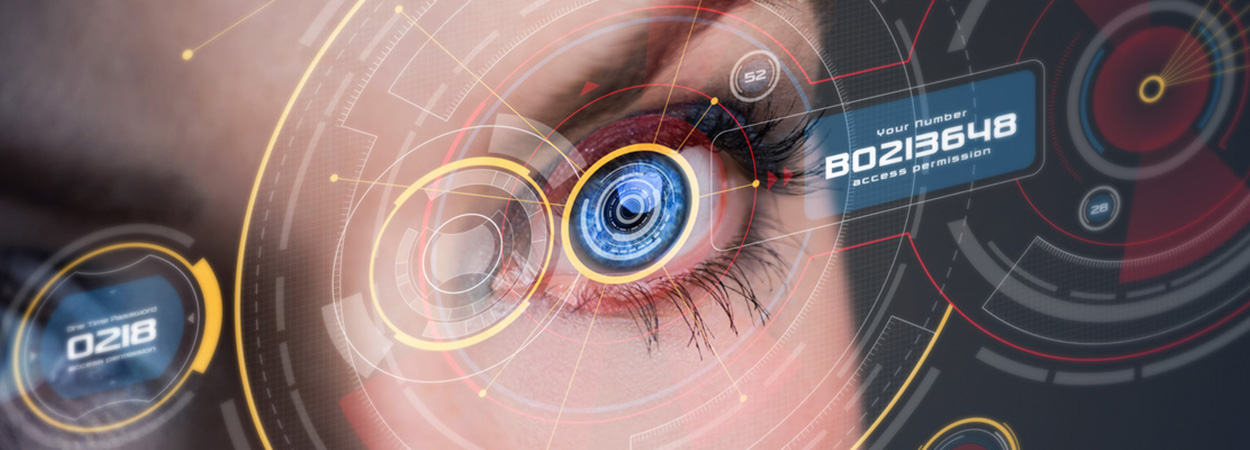We use cookies to offer you a better experience. For more information on how we use cookies you can read our Cookie and Privacy Policy.
Very Personal Security - Your Biometrics Update
November 23, 2023

They are finding new ways to figure out who you are
This is part two of our machine learning series. You can read part one on machine and deep learning 101.
Biometric recognition technology has been an essential part of our daily lives for a while now - in fact, you’re probably reading this story on a phone you unlocked with your thumb. The idea of biometric identifiers has been kicking around for many years (and many more if you count science fiction references). But there’s been rapid advancements and proliferation of biometric tech recently, all thanks to the equally rapid advancements of machine learning algorithms and neural networks.
In general, biometric recognition tech is a five-step process that works like this:
1. Acquisition. A variety of sensors gather audio, visual, and/or motion input to evaluate.
2. Pre-processing. Various “noises” (distracting information that will hinder the matching process) are filtered out.
3. Registration and segmentation. Biometric signatures are segmented from their background and registered in the database.
4. Feature extraction. The key pieces of the biomarker (for example, the ridges of a fingerprint) are extracted for comparison.
5. Classification. The system decides if the sample is a match. This stage requires the most algorithmic analysis.
We have lots of biometric markers that we can be identified by: Things like fingerprints and iris scans, as well as less-used markers such as ears, gestures and walking gait. Right now, though, there are a few markers that are hogging the spotlight. Expect rapid machine learning and neural network development - as well as growing databases - in these areas in the next few years:
Faceprints
You’ve heard for a few years that your face will be your new fingerprint - and there’s a lot of money and research that’s making it happen right now. In 2014 Facebook began their DeepFace project, which used a nine-layer-deep neural network with 120 million parameters to develop 3D face modeling with 97 percent accuracy.
Both Apple and Google are investing in facial recognition technology for their smartphone software. Of course, faceprints are controversial because of privacy concerns - since unlike a fingerprint, you might be unaware that someone is scanning your face. Some casinos and retailers are using faceprints to monitor customers, and the U.S. Department of Homeland Security is investing in a faceprint monitoring system that’ll evaluate visitors crossing U.S. borders.
Voiceprints
Speaker identification algorithms using deep neural networks will soon be able to recognize your voice - or, more specifically, a “spectrogram” that maps out all the variables your particular voice can have. Some of the future applications of voiceprints include unlocking a car door (and detecting if a driver has had too many drinks to drive), as well as customizing digital assistant voice commands for each family member (such as preventing your kid from telling Alexa to buy that new video game).
Behavioral biometrics
Unlike physical attributes, which mostly don’t change, behaviors are often hard to reproduce - which can make them good security identifiers. Behavioral biometrics measures the unique rhythms of a person’s movements on their smartphone, such as how they type, how they scroll and how they hold the phone.
Smartphone manufacturers are already preparing for this: By 2022, 80 percent of smartphones shipped will have AI capabilities that can analyze these behaviors, according to a recent report. Hundreds of different behaviors can be measured, compiled and processed to identify if a user is a match; one behavioral biometrics company claims it can analyze more than 2000 parameters. This multi-layered personal signature has caught the eye of financial institutions and credit cards that are looking for ways to integrate behavioral biometrics into their cybersecurity measures.
Get started
Ready to integrate biometric identifiers into your own business needs? Find out more about HP Multi-Factor Authenticate Gen2, which can fortify your security with up to three authentication factors including fingerprints and facial recognition.
Article reposted with permission from HP Tech Takes.






